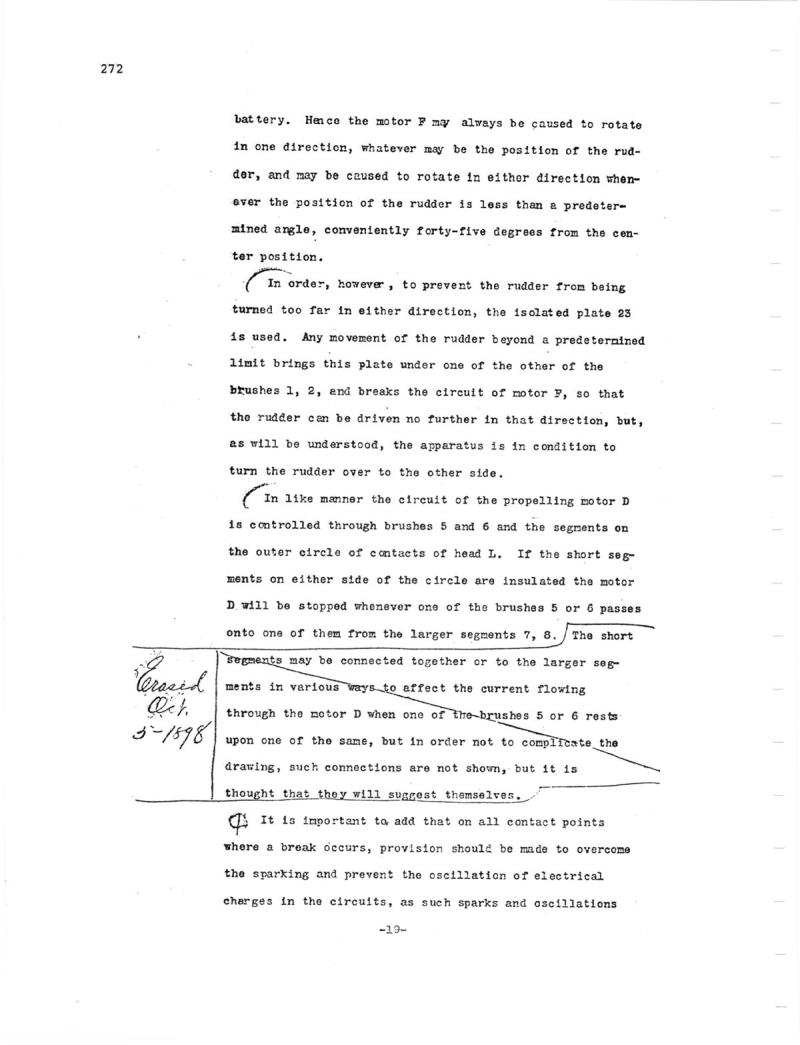
Nikola Tesla Patents
272 Crasid Oct. 5-1898 battery. Hence the motor F may always be caused to rotate in one direction, whatever may be the position of the rudder, and may be caused to rotate in either direction whenever the position of the rudder is less than a predetermined angle, conveniently forty-five degrees from the center position. In order, however, to prevent the rudder from being turned too far in either direction, the isolated plate 23 is used. Any movement of the rudder beyond a predetermined limit brings this plate under one of the other of the brushes 1, 2, and breaks the circuit of motor F, so that the rudder can be driven no further in that direction, but, as will be understood, the apparatus is in condition to turn the rudder over to the other side. In like manner the circuit of the propelling motor D is controlled through brushes 5 and 6 and the segments on the outer circle of contacts of head L. If the short segments on either side of the circle are insulated the motor D. will be stopped whenever one of the brushes 5 or 6 passes onto one of them from the larger segments 7, 8. The short segments may be connected together or to the larger segments in various ways to affect the current flowing through the motor D when one of the brushes 5 or 6 rests upon one of the same, but in order not to complicate the drawing, such connections are not shown, but it is thought that they will suggest themselves. It is important to add that on all contact points where a break occurs, provision should be made to overcome the sparking and prevent the oscillation of electrical charges in the circuits, as such sparks and oscillations -19
